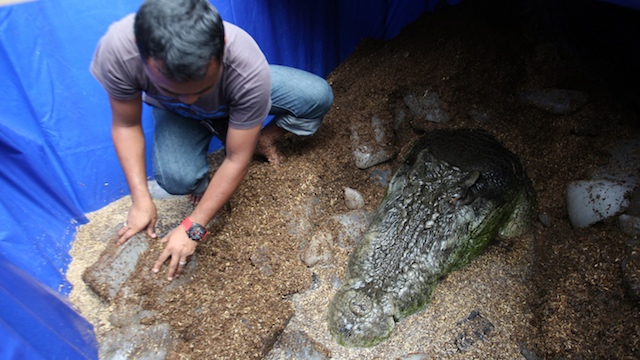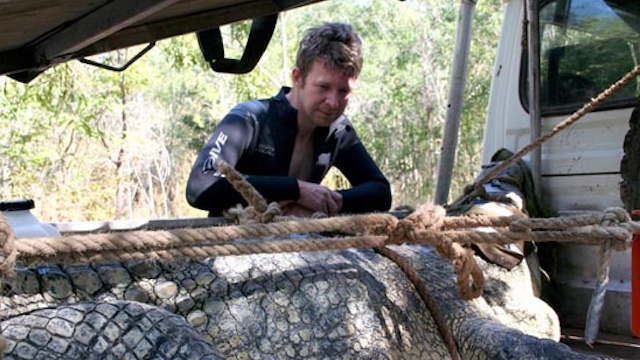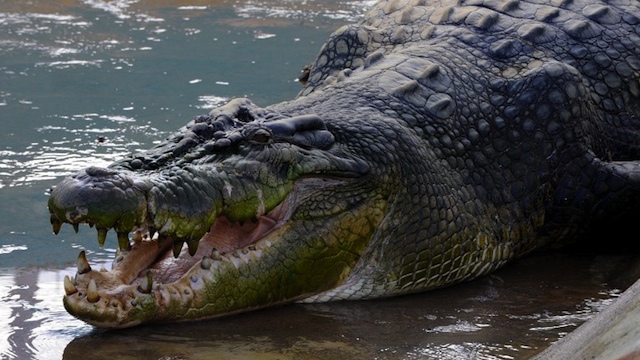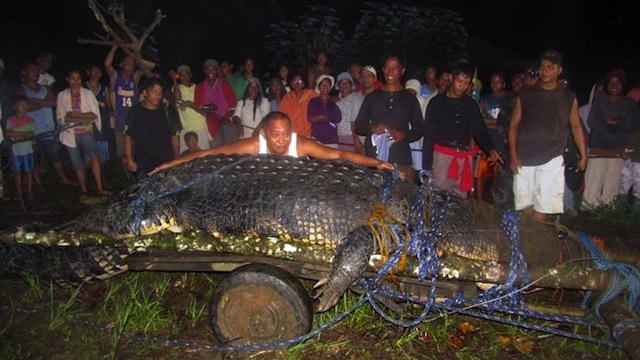SUMMARY
This is AI generated summarization, which may have errors. For context, always refer to the full article.

MANILA, Philippines – Typhoon Pablo may have contributed to Lolong’s death, the British specialist who certified the reptile as the world’s largest crocodile said on Tuesday, February 12.
“It is possible that the typhoon that hit Mindanao may have contributed in some way, perhaps due to a change in temperature and conditions, perhaps by blowing foreign objects into the enclosure, or perhaps simply due to stress,” Dr. Adam Britton told Rappler.
The Department of Environment and Natural Resources (DENR) sent on Monday a team of investigators to Bunawan, Agusan del Sur to look into the cause of death.
Experts from the Protected Areas and Wildlife Bureau and the National Museum will conduct a necropsy (autopsy on a non-human body) and assist in preserving the reptile’s skin for taxidermy, the DENR said in a statement.
“There are many possible reasons for Lolong’s death, but until the necropsy is completed all we can do is speculate,” Dr. Britton said.
After he was informed of Lolong’s death, the specialist published on Monday on his Croc Blog a brief obituary for the animal. Titled “So long, Lolong” the blog defended local authorities’ handling of the 6.14 m-long crocodile in captivity.

Crocs affected by temperature changes
Asked about how the temperature drop that Mindanao experienced after Pablo may have affected Lolong, Dr. Britton said that “temperature does have a big impact on crocodile activity, including appetite.”
“Crocodiles need to maintain a certain body temperature to digest food properly, and if it becomes too cool for a prolonged period then crocodiles will not only become less active but also become less interested in food.” he explained.
The British zoologist conceded that Pablo “would have likely affected Lolong’s behavior, simply through the changing conditions that it caused” but stressed that “it is too early to say if it contributed in any way to his death.”
A government-sanctioned hunting party caught Lolong in a sprawling marsh close to Bunawan in September 2011 after it was suspected of biting the head off a young school girl and of eating a fisherman.
Its capture made the town famous and Lolong, named after a local crocodile hunter, became a big tourist attraction.
After the death of the Philippine reptile, the world’s largest croc in captivity is now in Australia, a 5.48 m specimen named Cassius.

Plastic found in stomach
Scores of citizens, among them influential forensic pathologist Dr. Raquel Fortun, have called for an official probe into the cause of death of the most famous reptile in the country.
The Philippine Star reported on Monday that Lolong had been ailing since swallowing a cord 3 weeks ago, but Bunawan spokeswoman Welinda Elorde denied the claim.
“We have been alternately feeding him with meat and poultry, and there was no way he could have eaten anything other than that,” she told AFP the same day.
The reptile had not eaten its usual meal late last month, and its left stomach “ballooned,” a municipal official told the Philippine Daily Inquirer on Sunday.
Dr. Britton confirmed that “a small amount of plastic was found in his fecal matter in January” but “there is no direct evidence that this was responsible for his death at this stage.”
“However, it is possible that there was more plastic in his digestive system, and this could have caused serious problems,” he said.
The crocodile specialist also mentioned that plastic can remain in a crocodile’s stomach for many years: “If some [plastic] is found in there, it may be difficult to know if it was ingested recently or when he was still living in the wild. Stomach acid will affect plastic so there may be some clues if any is found.”

Captivity did not cause death
Lolong’s death was highlighted by animal rights groups as proof that the reptile be released back into the wild, arguing that the pen that held him was too small and stressful for an animal used to roaming great distances inside the Agusan Marsh Wildlife Sanctuary.
People for the Ethical Treatment of Animals (PETA) on Monday said the crocodile suffered in his cage and “died because people wanted to make money off his captivity.”
“When you consider the immense size and strength of Lolong, there is no doubt that being contained in a cramped enclosure caused him extreme distress and misery,” PETA added in a statement said.
Bunawan spokeswoman Welinda Elorde rejected the claim and insisted that caretakers tried to give the reptile everything he needed in captivity.
Releasing him would have left him in the mercy of villagers who would hunt and kill him, she told AFP.
Dr. Britton agreed and said: “Crocodiles are quite tolerant of captive conditions once they have settled, and Lolong was looked after with great dedication and care by the staff of the [Bunawan] EcoPark.”
“He was a very valuable animal to Bunawan, he was treated like royalty. His death was too rapid and sudden to have been caused by his general care or the design of the enclosure,” he added.
Once we learn the results of the necropsy “we’ll be able to discuss if and how [Lolong’s death] could have been prevented,” concluded the crocodile specialist and National Geographic Channel consultant. – with reports from Agence France-Presse/Rappler.com
Related stories:
Add a comment
How does this make you feel?





There are no comments yet. Add your comment to start the conversation.